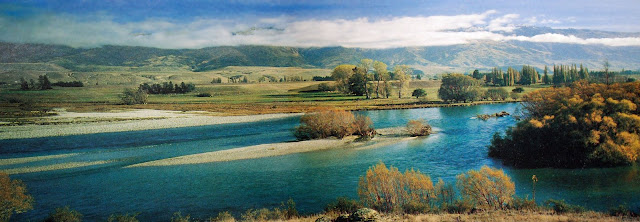Lost Orchards and Farmland
Before the Clyde dam, the Cromwell Gorge produced some of New Zealand's best fruit. The reservoir behind the Clyde dam flooded a total of 2,300 hectares of productive land, including 12 large orchards on the river terraces along both sides of the Cromwell Gorge, 5 orchards at Lowburn, and fertile farmlands on both sides of the Clutha River in the Lowburn area.
The orchards in the Cromwell Gorge and a few orchards at Lowburn had frost-free micro-climates producing fruit early, earning good prices over the Christmas and New Year period. The Government, however, maintained that profitable late maturing fruit could be grown in the Earnscleugh area with a new irrigation scheme from the Clyde dam. They claimed that late maturing nectarines and peaches could realise $50,000 to $60,000 per hectare per year. Growers were sceptical, and MAF (Ministry of Agriculture and Fisheries) publicly said that this was unlikely.
The Clyde dam proceeded in the face of numerous objections, and the much touted irrigation scheme eventually only delivered limited water from the top of the Clyde dam to Earnscleugh, to help maintain flows in the Fraser River. The late nectarines and peaches never realised the projected returns.
Meanwhile, some of the most fertile farmland in Central Otago, bordering the Clutha River at Lowburn, disappeared under the Dunstan reservoir.



